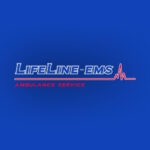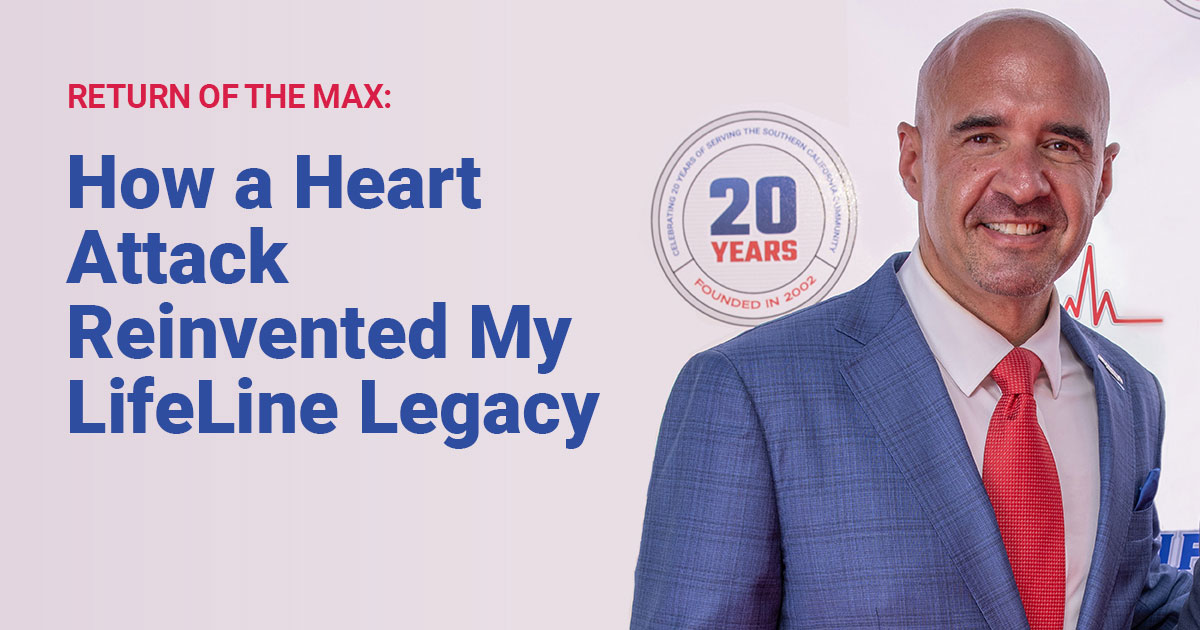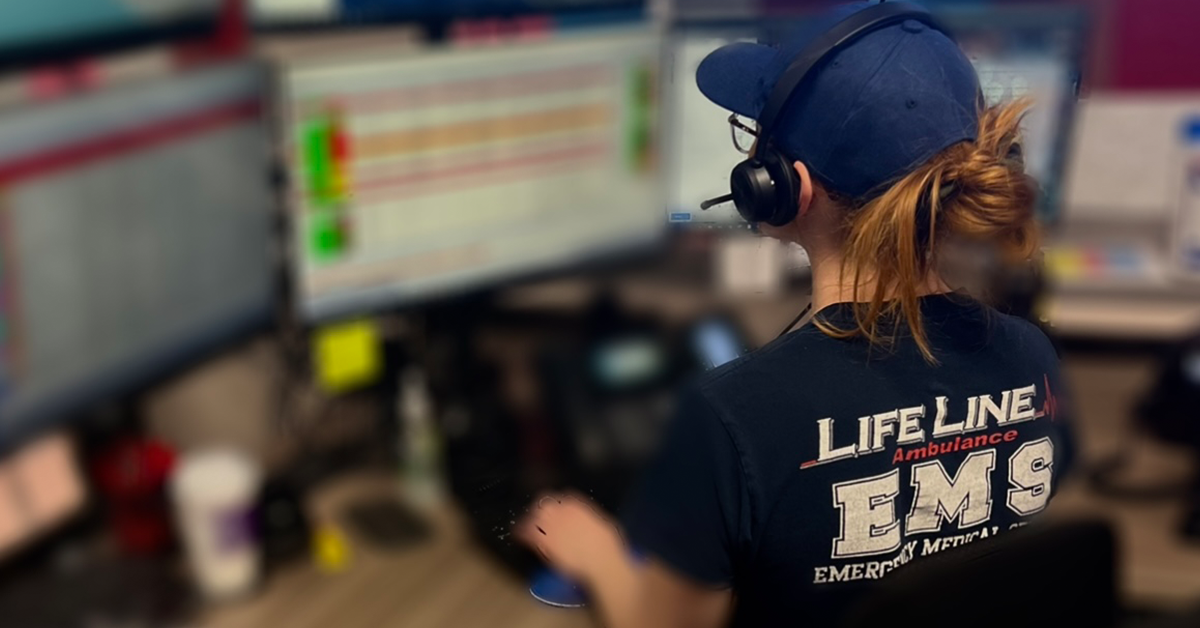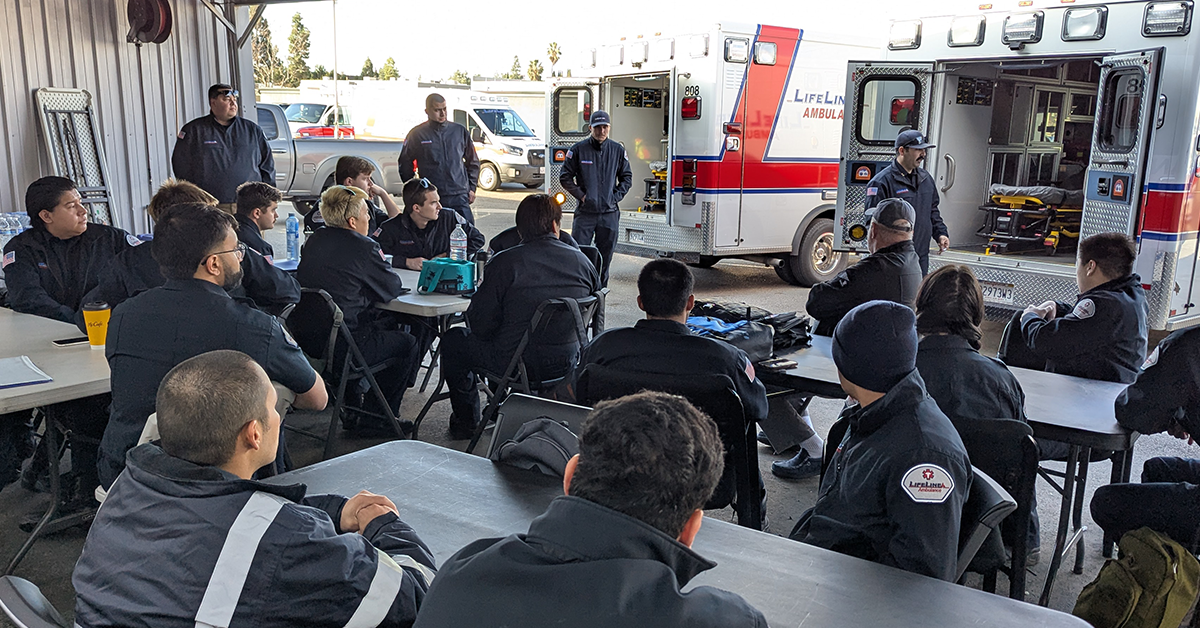July of 2024 marks 22 years in business. I continue to reflect on the growth of LifeLine Ambulance Service and my own personal growth as its Co-founder and CEO. After returning home from the military and interviewing with a financial services company on 9/11, my life took an unanticipated direction. The events of that day made me want to give back to the community even more.
I remember graduating from my EMT program in early 2002 and saying, “I think I’ll start an ambulance company.” My buddies from the EMT class laughed at me, but they soon became some of the first employees of LifeLine.
We bought two ambulances, and we were up and running. I would visit hospitals and ask them to give me a chance. I would answer the phone when they called to book a pick-up, show up to care for and transport the patient, and then prepare the paperwork to bill the call. I look back and laugh, but at the time, it seemed like the only way, and I still believe it was.
I am proud that I have done almost every non-clinical role in this organization myself. This hands-on experience helped me understand the challenges and remove barriers that existed. My clinical tenure was short as we grew and hired more clinicians. Over the years, I have worked with and learned from so many. I have seen success and understand that failure means you need to try a different way.
I have always admired EMTs, Paramedics, Respiratory Therapists, and CCT Nurses. Their medical knowledge, expanding scopes of practice, and ability to manage difficult and stressful situations with their patients are impressive. Although I am no longer caring for patients each day, I approach business with many of the same critical thinking and tactical skills that it
takes to manage a patient.
I’ve spent over two decades steering LifeLine Ambulance, guiding our mission to provide treatment and transport services to ill and injured patients. We continue to ensure patient care is our top priority.
We ran our first transport at LifeLine Ambulance Service on July 7, 2002. Twenty-one years later, on July 7, 2023, I faced a new challenge that redefined my personal and professional life forever. No one knew, until now.
The day began like any other Friday. By 5:30 am, I was up and ready for my regular gym session. After a good workout, a shower, and a day packed with work, I capped the evening with a business dinner at Shiraz, enjoying exquisite Persian cuisine. It was a perfect end to a productive day, or so I thought. At 10 pm, as I prepared for bed, I felt a strange sensation in my chest. Initially, I attributed it to overeating – cherry rice and kebobs can do that to you, right? Little did I know, it was the harbinger of a life-altering event.
The next morning, I woke with persistent chest discomfort. Still convinced it was heartburn, I powered through my routine, hitting the gym for another workout. But by 11:30 am, during a crucial meeting in Downey, the pressure intensified. This meeting was important and would result in the first acquisition for LifeLine EMS, increasing our organization by thirty percent. I couldn’t skip it or leave early.
Determined to stay on top of my commitments, I pressed on, only to find the discomfort escalating to an unbearable level as I drove home. Two elephants, it felt like, were now perched on my chest. I knew from school and from not living under a rock that this was probably not the best sensation. Although my ingrained grit told me it was nothing, I knew I needed to be smart and have someone, potentially with a medical degree, diagnose me with reflux. Prilosec will take 24 hours to work, right? I have things to do and didn’t have time to wait.
Reluctantly, I decided to stop by an urgent care clinic near Cedars-Sinai. I downplayed my symptoms to the nurse, explaining that I’d felt some discomfort the previous night but had managed a two-hour workout that morning. Despite my reassurances, I quickly transitioned from being a CEO in a healthcare organization to being a cardiac patient with repeat EKGs, Aspirin, Nitro, and blood tests. I knew I would be okay but had to take advantage of the possible recruitment of this wonderful nurse as a great fit for our Critical Care Transport program. Don’t blame a guy for trying.
When the nurse returned, she noted my elevated troponin levels, a marker for heart damage. Despite feeling somewhat better, the escalating numbers – 0.25, then 0.50 – prompted her to call the fire department. An NSTEMI? Who has time for this? I’m sure it will go away, right? I begged them to wait a few minutes – there was a nearby spot that sold amazing empanadas. I asked if I could just head down the road and grab a couple, as I anticipated I’d have to wait for a bit at the hospital. As a healthy healthcare executive, I was in shock. Looking back, what was wrong with me? It’s funny but not funny. As a smart business executive living seven days a week in the healthcare sector, I was not even joking when I asked her to hang tight. I was not thinking right.
Beverly Hills Fire Department arrived faster than an Uber Eats order, to my dismay. As they prepared me for transport, I couldn’t help but engage the paramedic, even attempting to recruit him for a shift at LifeLine. My mind was still processing this sudden shift from leader to patient.
At Cedars-Sinai, the reality began to sink in. Surrounded by a diligent medical team, I underwent several more tests. The results showed significant arterial blockages, and I was prepped for a catheterization procedure. Three stents were placed, with more procedures scheduled for the following weeks. Two blockages were 99% occlusions, and additional large occlusions
in another vessel were present.
The next few hours were a blur of medical interventions and realizations. As I lay in the PACU, recovering, a sudden drop in vitals occurred, and then bam, I coded, prompting a rapid response team to spring into action. I woke up to a crowd of medical professionals, an experience that underscored the thin line between life and death. The nitro patch should have been
removed a bit earlier. I remember orange juice and then a feeling that I was going to pass out, then black, nothing.
Over the next three days in the Cardiac Care Unit, I reflected on my journey. The exceptional care I received at Cedars-Sinai reinforced my belief in our mission at LifeLine. This heart attack, a stark reminder of my mortality, also highlighted the importance of the work we do in Emergency Medical Services.
I left the hospital a week later, determined to integrate this personal experience into my professional ethos. The heart attack had reshaped my perspective on patient care, emphasizing the need for continued empathy, thoroughness, and the human touch in healthcare. Even if your patients do not attempt to recruit you or escape for amazing Mexican food a few blocks away, if you have not been a patient, your empathy scale of understanding may not be as amazing as it should be. I have seen clinicians annoyed at why patients are being difficult or asking so many questions. I have been that patient. I was not trying to be difficult or have the care teams think that I did not take this seriously.
I was in the Cardiac ICU and floor for a total of seven days. People thought I was working from home, vacationing, here, there, and everywhere. I didn’t want to display weakness. I crushed the workout that morning, I pushed on like I normally do in business and performance. Was this a mistake? I bought another company that day. I have never been one to take a break, but this humbling 20 hours may have been my last if I didn’t listen to my body, eventually.
I tried to escape from the ICU and get to a vending machine. I asked my fiancée to bring business cards when she came to visit for the first time, and I recruited four clinicians to interview and join our service. I clearly had no neurological deficit from this event. I was me, still, but with a renewed sense of gratitude and empathy for others.
I was never scared, not once, but I did not believe that someone as resilient as me, a business owner of an ambulance company in Southern California, at the fittest in my life, could experience this. I was healthy— except clearly, I was not.
It remains a mystery of sorts to the cardiology team. In total, I had five stents placed, had to be on medication briefly, and go to cardiac rehab. Within three months, I was off the meds, out of rehab, and again with a clean bill of health. No signs that this would happen, no increased cholesterol, no hypertension. I was at the top of the game until I almost wasn’t.
I returned quite quickly to the “office” and carried out this renewed purpose. My team at LifeLine and I are more committed than ever to ensuring that every patient receives the extraordinary care they deserve. This experience has not only been a humbling reminder of life’s fragility but also an inspiration to strive for greater heights in our service to the community.
As I celebrate the one-year anniversary of my heart attack and the 22-year anniversary of LifeLine, I now share this, what appeared to be vulnerability, with you all. It takes a village, and I’m glad my village showed up that day. I am part of the village for our community, colleagues, and partners we serve, and pay it forward, I will.
Keep Reading
Want more? Here are some other blog posts you might be interested in.
In the high-stakes world of emergency medical services, clear and effective communication can mean the difference between life and death. EMS professionals...
Emergency Medical Services is an ever-evolving field that requires constant learning and adaptation. With medical advancements, technological innovations, and increasing public health...
Emergency Medical Services s a high-stress, physically demanding profession that requires dedication, quick decision-making, and resilience. While the rewards of saving lives...






